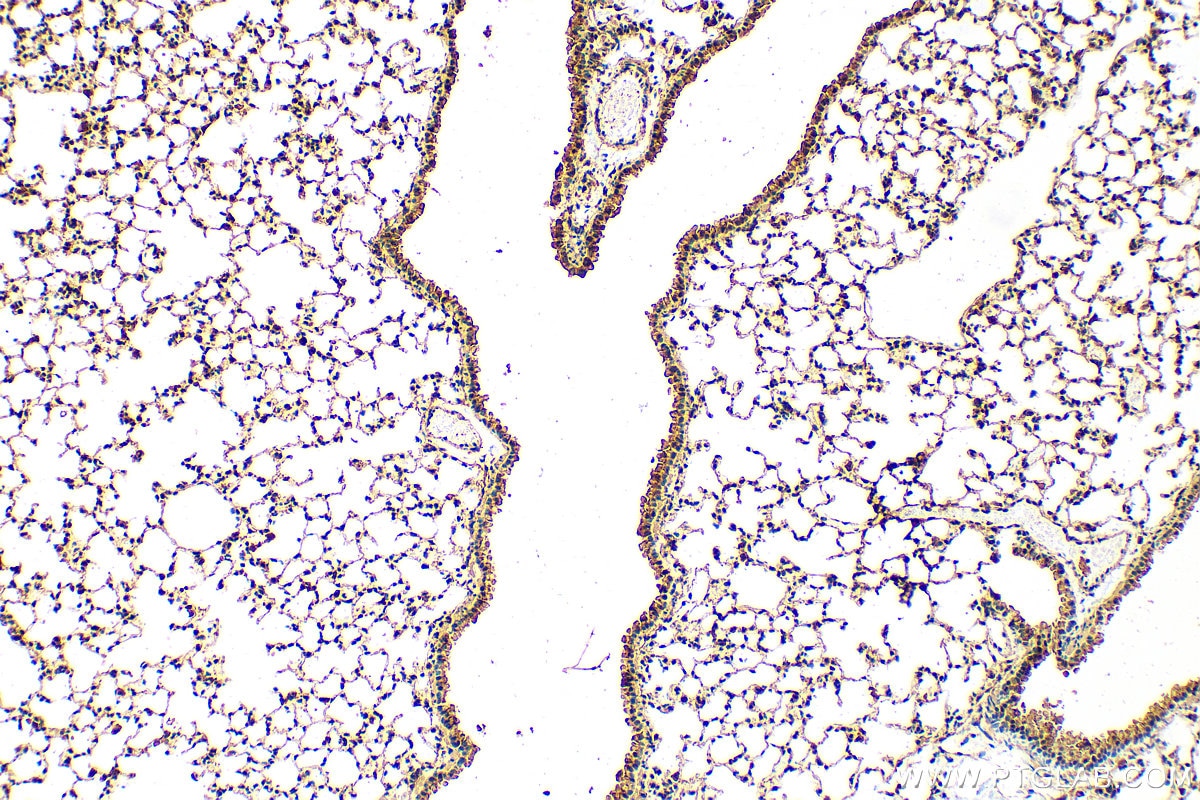Tested Applications
| Positive IHC detected in | mouse lung tissue Note: suggested antigen retrieval with TE buffer pH 9.0; (*) Alternatively, antigen retrieval may be performed with citrate buffer pH 6.0 |
Recommended dilution
| Application | Dilution |
|---|---|
| Immunohistochemistry (IHC) | IHC : 1:50-1:500 |
| It is recommended that this reagent should be titrated in each testing system to obtain optimal results. | |
| Sample-dependent, Check data in validation data gallery. | |
Product Information
31281-1-AP targets DNAH11 in IHC, ELISA applications and shows reactivity with human, mouse samples.
| Tested Reactivity | human, mouse |
| Host / Isotype | Rabbit / IgG |
| Class | Polyclonal |
| Type | Antibody |
| Immunogen | DNAH11 fusion protein Ag34658 Predict reactive species |
| Full Name | dynein, axonemal, heavy chain 11 |
| Calculated Molecular Weight | 520 kDa |
| GenBank Accession Number | NM_001277115 |
| Gene Symbol | DNAH11 |
| Gene ID (NCBI) | 8701 |
| RRID | AB_3669928 |
| Conjugate | Unconjugated |
| Form | Liquid |
| Purification Method | Antigen affinity purification |
| UNIPROT ID | Q96DT5 |
| Storage Buffer | PBS with 0.02% sodium azide and 50% glycerol, pH 7.3. |
| Storage Conditions | Store at -20°C. Stable for one year after shipment. Aliquoting is unnecessary for -20oC storage. 20ul sizes contain 0.1% BSA. |
Background Information
DNAH11 (dynein axonemal heavy chain 11) encodes a ciliary outer dynein arm (ODA) protein. Human DNAH11 is important for organ lateralization and likely also for the function of respiratory cilia. DNAH11 mutations are a common cause of PCD with normal ciliary ultrastructure and hyperkinetic ciliary beating (PMID: 26909801).
Protocols
| Product Specific Protocols | |
|---|---|
| IHC protocol for DNAH11 antibody 31281-1-AP | Download protocol |
| Standard Protocols | |
|---|---|
| Click here to view our Standard Protocols |



